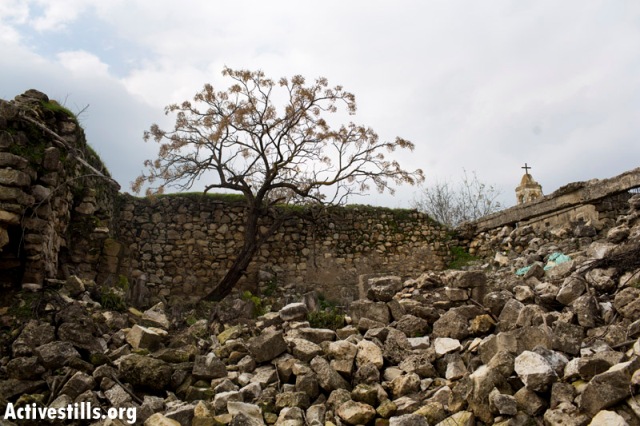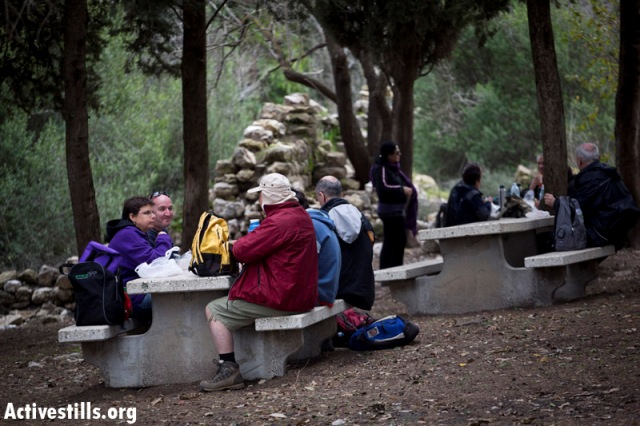The internally displaced community of Bir’em found abusive graffiti, stars of David and the word ‘revenge’ sprayed on its church, graveyard and other buildings. Yet the act of vandalism is but one of the community’s problems, as it continues its struggle for return.
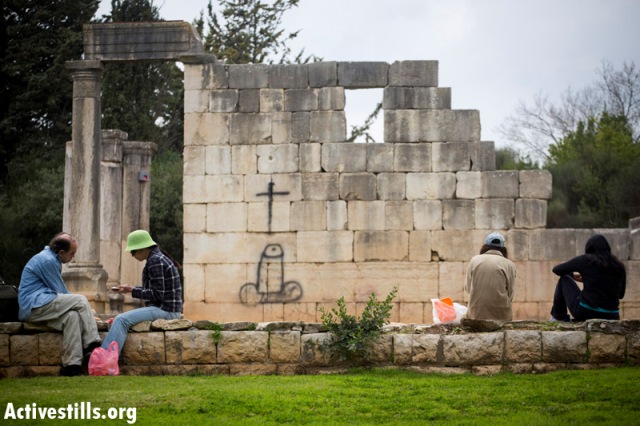
Last week, several days after they celebrated Christmas, the former residents of Bir’em discovered the graffiti, as well as flammable liquid that had been poured at the entrance of the Church of Our Lady in the village, which has been mostly demolished. As reported in Haaretz, the Committee for the Uprooted of Kafar Bir’em filed an official complaint to police, but no suspects have been identified.
“This is the second time in the last month that something like this has happened,” says Deeb Maroun, a member of the committee. “Just three weeks ago, someone sprayed ‘revenge’ on the floor of the former school, and put racist stickers on the walls. This has never happened in all the 64 years since we were uprooted from the village, although we have seen cases of gravestone desecration in previous years. While of course you can’t be certain as to the identity of these vandals, it appears to be part of an ugly plague that has been sweeping the entire country, through Jerusalem churches, the Latrun Monastery and more.”
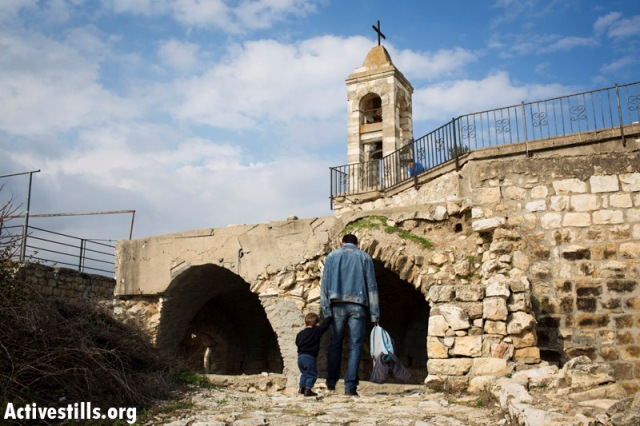
On Saturday, the entire community gathered from all neighboring villages for the weekly prayer. Worshippers had cleaned the church of the graffiti ahead of time, but other offensive slogans have remained in its vicinity, as the villagers are not allowed to touch anything in the “national park” that was once their home, which now serves as picnic grounds for vacationing families.
In 1948, after the war ended, IDF forces entered the villages of Bir’em (also spelled Bir’im) and Iqrit, and ordered the Palestinian residents (by then citizens in the newly founded State of Israel) to leave their homes for a period of two weeks, fearing their closeness to the Lebanese border would endanger the region’s security. The two weeks soon became a month, then a year, and soon enough, Bir’em was populated by newly arrived Jewish immigrants. When the villagers’ petition to the High Court led to a ruling that they must be allowed to return, the houses were demolished and the land confiscated.
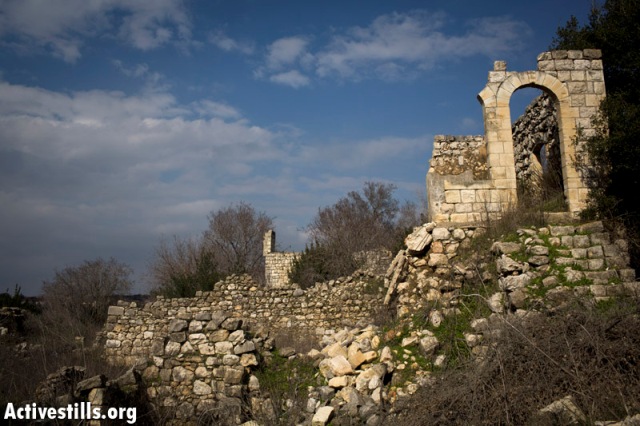
Repeated court victories for both villages have not led to the villagers’ return to this day, largely because of the fear of successive governments that abiding with the court’s ruling would open the gates for much larger claims of return on the part of 1948 refugees and internally displaced people within Israel. Residents of the two villages are still determined to realize their rights, and maintain the link to their lands by visiting the surviving churches and cemeteries on a regular basis, and holding yearly summer camps for youth to teach them their history.
All this, however, is hidden from visitors to the national park established around Bir’em, dubbed “Bar’am Ruins.” Official notices tell the story that this is the ancient site of the Jewish village of Bar’am (dated between the 2nd and 6th centuries AD), bearing no witness to the lives of Israeli citizens who used to live here and who still frequent their partly demolished homes. The trails in the park take visitors from the parking lot to the Old Synagogue (which once bore the slogan, “May there be peace in this place and all places of Israel”), with nothing but grass and picnic tables along the way. Only those who tread off the path will find the impressive ruins of the Palestinian village that the internally displaced wish to return to.
“We tried to put a sign near the church once, just so that people coming here for a picnic would know our story, but the Nature and Parks Authority took it down,” says Kassan Makhoul, a young man whose parents were just children when soldiers ordered them out of their houses and sent them to sleep in surrounding fields and caves. “I don’t understand how Israel expects to see us sharing the burden (of military/national service, H.M.) without giving us equal rights. How can you simply steal a citizen’s land and still expect anything of him? Even if you had the world’s smallest and ugliest of houses, still you wouldn’t want to be uprooted, because it is yours.”



